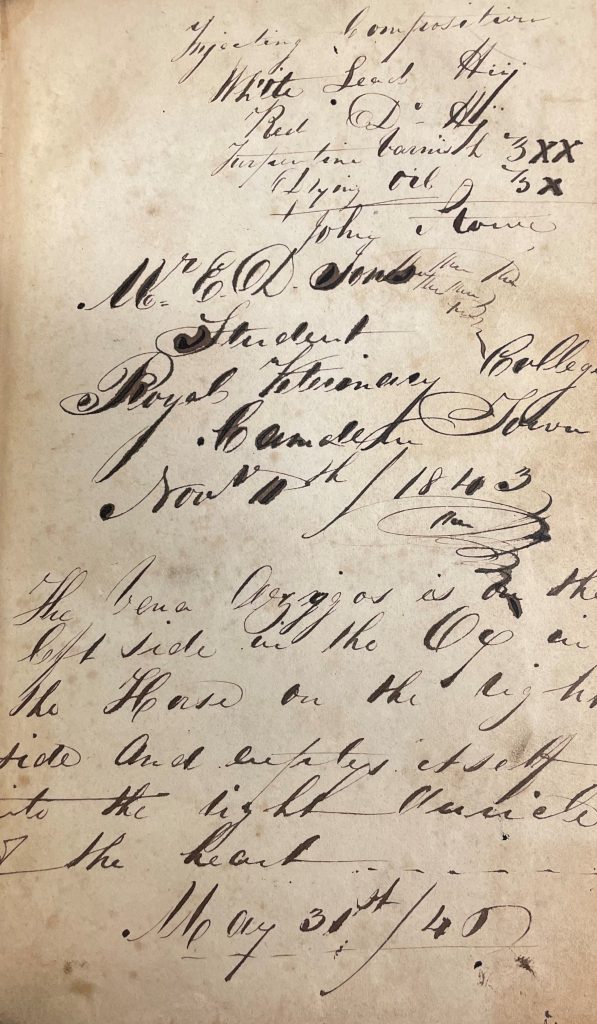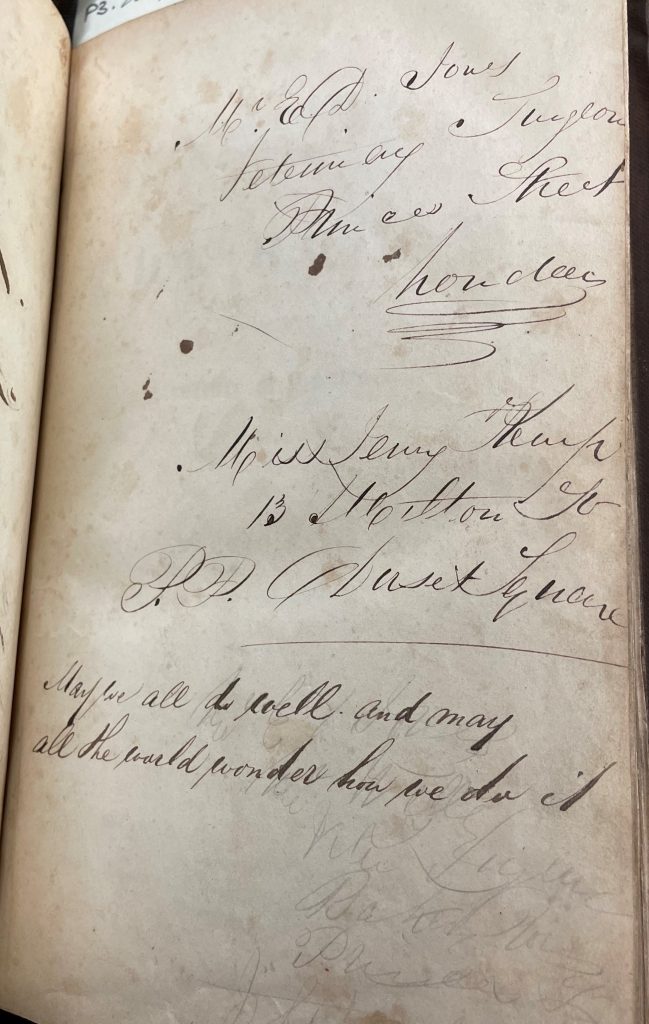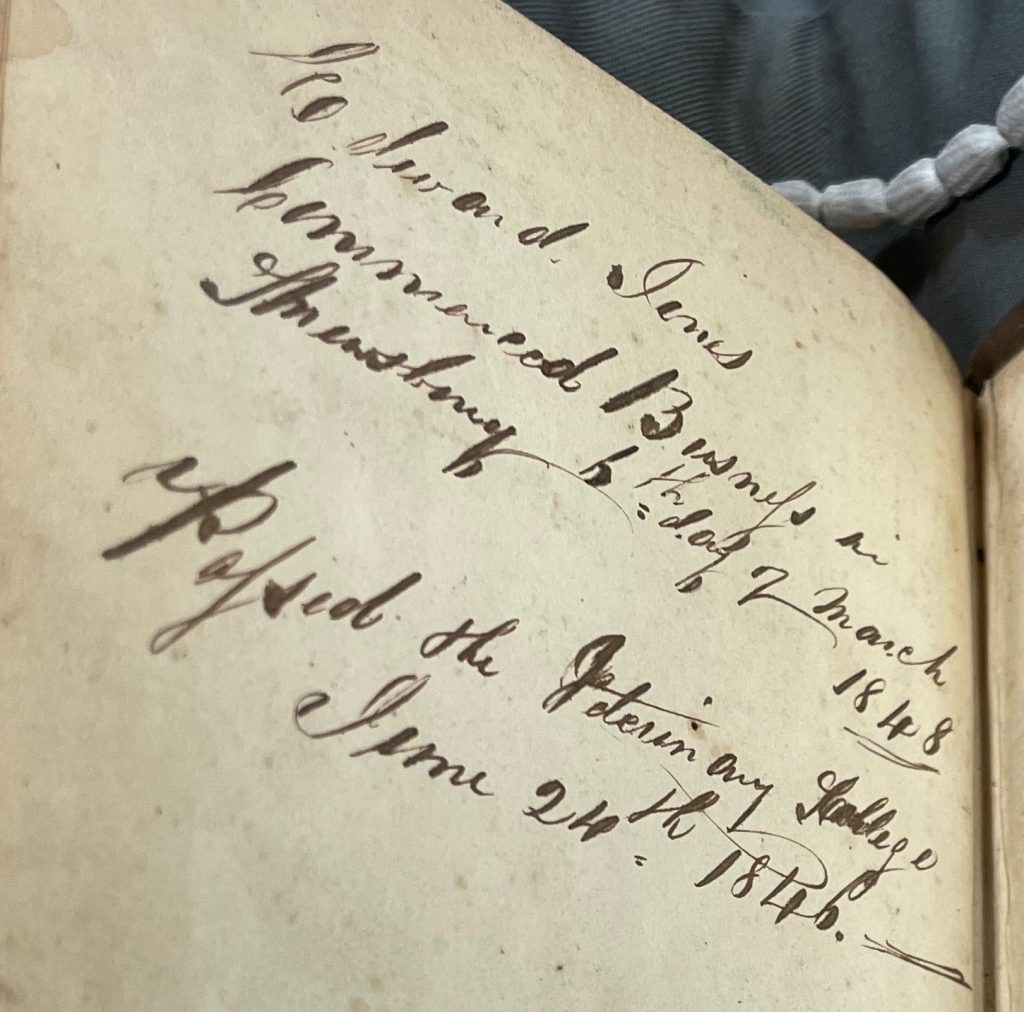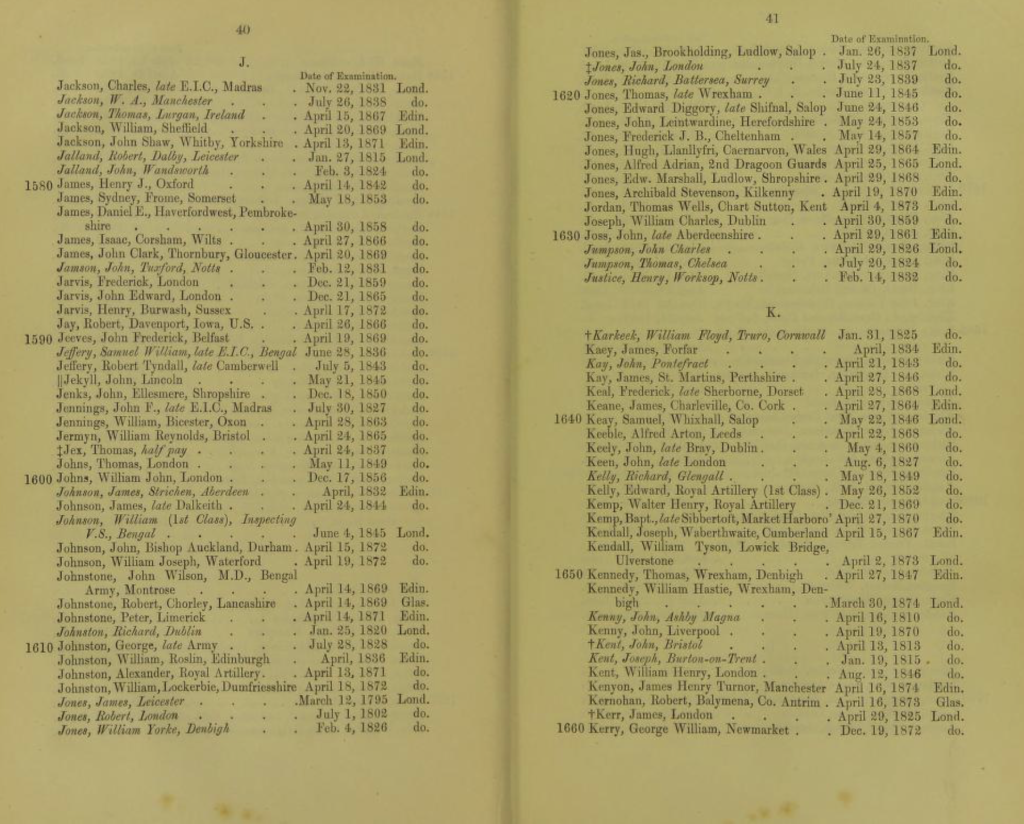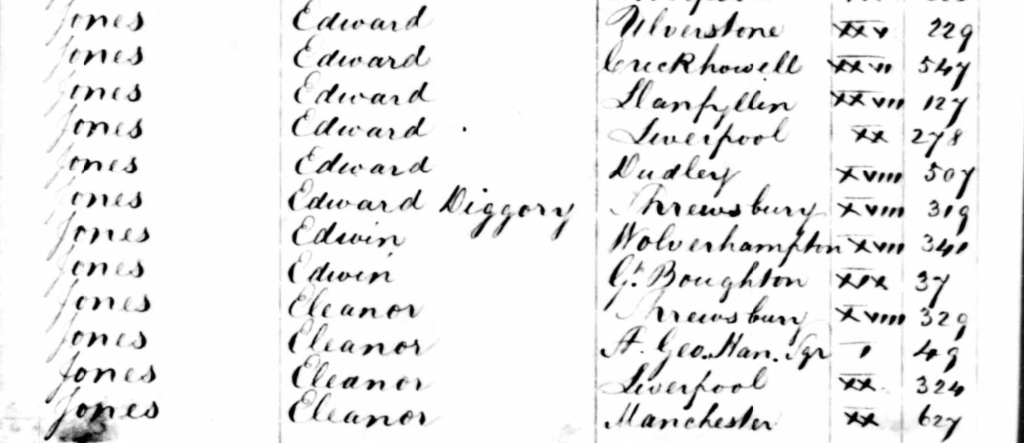
My name is Phoebe Chandler, and I am a second year Classical Studies student here at the university. I am currently taking part in a placement here Special Collections and Archives department. My task is to create a report on books that fall under the loose theme of ‘science’ previously owned by a female reader (due to the time period in which I am focusing, ‘science’ is used in a loose term due to how it encompasses ‘women’s science’, such as etiquette and children).
One of the books I have come across during my project is ‘The Anatomy of the Horse, embracing the structure of the foot’, by William Percivall, published 1832 (SPEC P.3.282/B). I have found this book of particular interest to me as it has opened up a rabbit hole of such into the lives of the previous owners – highlighting the importance of inscriptions in books. The pre-existing notes in the library catalogue on the book explain that it was published by Longmans, printers, and it also states the ownership history; “Inscription by a female owner: Miss Jenny Kemp. From the former departmental libraries of the Faculty of Medicine.” After inspection, it can also be seen that the other owner of this book was Mr Edward D Jones, a Veterinary Student. In this blog, I will explain how important inscriptions are, and why the project I am partaking in is so important.
Opening the book to the first page, revealed that the front inside cover and first and third page were completely inscribed by at least two separate hands. ‘Mr E. D. Jones, Student, Royal Veterinary College, Camden Town. Nov 10th 1843’. Beneath there are pen trails and more writings, most of which are illegible due to ink spillages. ‘E J Veterinary Student’ is written across the pages, visible only from the book being closed. The writings are difficult to work out and so a reading of them is fragmented. It is to be believed that the small paragraph written by, presumably, Mr Jones concerns the heart of a horse, and is dated ‘May 31st /40’.
Turning to the next page, we find the hand of the other owner, Jenny Kemp. This second hand has written ‘Mr Ed D Jones, Veterinary Surgeon, Princess Street, London’. Beneath this, ‘Miss Jenny Kemp, 13 [Illegible] Sunset Square’. Beneath this, one of them, probably the hand assumed to be Miss Kemp; ‘May we all do well and may all the world wonder how we do it’.
The back inside cover contains more annotations by Mr Jones; ‘Edward Jones, Commenced Business in Shrewsbury 5th day of March 1848, Passed the Veterinary College, June 24th 1846’. It is this apparent graduation date that led to a big discovery.
After a quick look on the National Archives, I discovered that the records of the Royal Veterinary College, London and their previous members can be found online. On the 24th June, 1848, a Mr Edward Diggory Jones, of Shropshire was examined. From this we have discovered his middle name, which makes searching for him much easier.
From his birthplace and full name, a marriage record was discovered England and Wales Civil Registration Marriage Index, 1837-1915 to Sarah, now Mrs Sarah Jones.
This also led to a record of Mr Jones’ will. Under the amount of £100, Mr Jones, a veterinary surgeon for Salop (Shropshire). He died 5th December, 1871, at the “‘Roebuck’ Bear-house North-street Whitechapel in the Country of Middlesex.’
And thus became a timeline of Mr Jones’ story. But what was still lacking was any conclusive clues on Miss Kemp. She could not have been an enrolled attendant of the Royal Veterinary College, as the RVC would not allow their first female student until 1919 (Miss Aleen Cust). There is, however, an ‘Audrey Kemp’ on the register but she would not be permitted until 1935. And so, the best lead we find ourselves with about Miss Jenny Kemp is from the ‘address’ that is somewhat illegible on the third page of the book. ‘Sunset Square’ is in Cambridge. But could also have been elsewhere or moved, but suggesting it is the Sunset Square in Cambridge makes it just an hour outside of London, and not too far from Shropshire. Very little can be found on Sunset Square, or Miss Kemp. This is especially confounding due to on paper, literally, we have more information on her than we do Mr Jones.
We are left, therefore with the reminder the opportunities that differed between Mr Jones and Miss Kemp, namely through gender divisions in education that neither of them would live to see any major progress in. And so:
‘May we all do well, and may the world wonder how we do it’.
Bibliography and references:
Images 1-4 were taken by myself, of the book ‘The Anatomy of the Horse, embracing the structure of the foot’, by William Percivall, 1832. Now housed in the Special Collections and Archives department of the Sydney Jones Library, University of Liverpool, SPEC P.3.282.
Image 5 was taken from Register of the members of the Royal College of Veterinary Surgeons from January, 1794, to May, 1874, inclusive [electronic resource] by Royal College of Veterinary Surgeons; University of Glasgow. 2015-04-30 11:54:11.790735
Image 6 was taken from the ‘England and Wales Civil Registration Marriage Index, 1837-1915 for Edward Diggory Jones’.
Image 7 was taken Gov.uk registry of wills.
